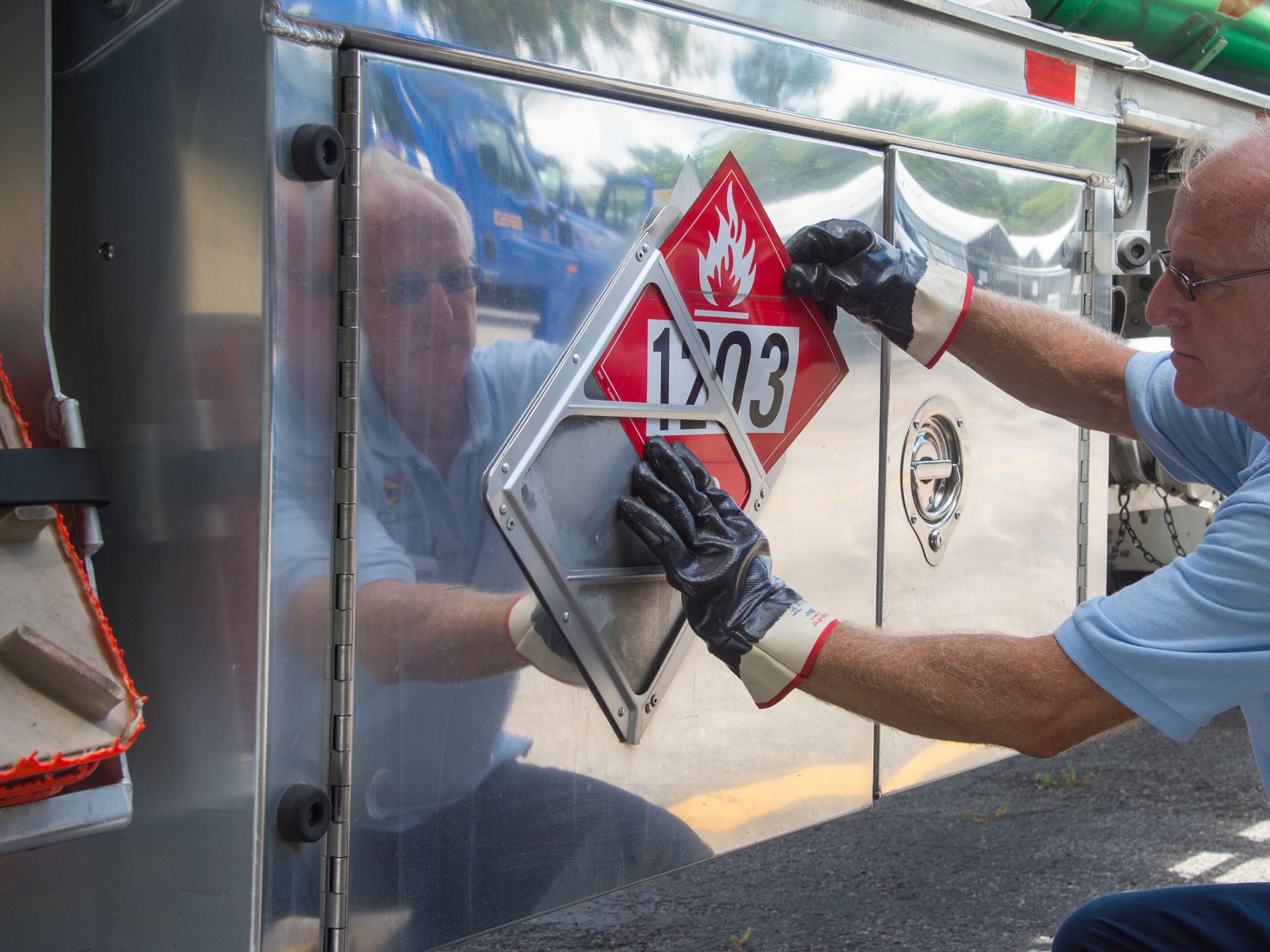DOT labels and placards

- DOT label requirements take precedence during transportation.
- Small containers packed in larger shipped containers require an HCS label but not a DOT label.
During transportation, the Department of Transportation (DOT) label requirements take precedence. If hazardous chemical containers are packaged within another container (such as small bottles packed inside a box), the outer container is required to be labeled per DOT regulations, but a HazCom standard (HCS) label is not required to appear on the outer container. The smaller containers packed inside the larger shipped container would require the HCS label, but do not require the DOT label.
If shipped containers are not packaged within another container, such as a bucket, drum, or tote, then these containers must have both the DOT required markings and the HCS label, tag, or marking. In situations where a tank truck, rail car, or similar vehicle comprise the container for the hazardous chemical, the HCS labeling information may either be posted on the outside of the vehicle, attached to the accompanying shipping papers or bills of lading, or transmitted by technological or electronic means (if agreed to by the receiving entity).
Packages, containers, rail cars, or similar vessels holding hazardous materials regulated by the DOT and shipped to a workplace are required to arrive fully marked, placarded, or labeled according to the hazardous materials regulations (HMR). The retention rule requires employers who receive hazardous materials to retain markings and any other information specified by HMR until the materials have been removed so they no longer pose a health or safety risk.
If a tanker truck or railroad tank car is stored (wheels chocked and cab/engine disconnected from the tanker/rail car) prior to offloading, it may be labeled as a stationary process container. If the tanker truck or railroad tank car becomes part of the process (e.g., hooked up to the piping system, used as a process container), it must also be labeled and may be labeled as a stationary process container. However, if the tanker truck or railroad tank car is used as a transport container in-house (e.g., internal railroad car system), the container is no longer stationary, and it may not be labeled as a stationary process container.
Additionally, if a tanker truck or railroad tank car that is labeled in accordance with the Department of Transportation (DOT) labeling requirements arrives at a facility and is offloaded into a storage tank, without storage of the tanker truck or railroad car, the Occupational Safety and Health Administration (OSHA) says the DOT labeling would be sufficient on the tanker truck or railroad car.
